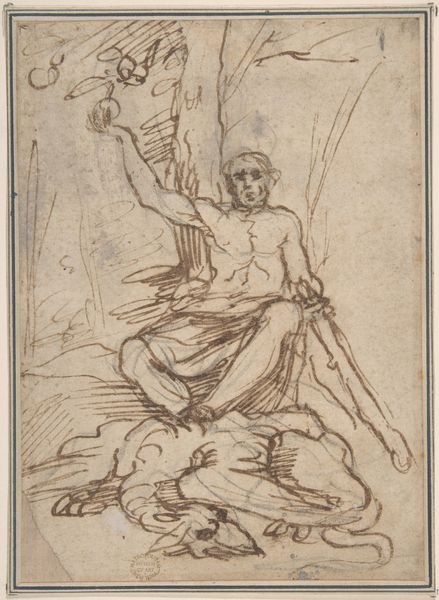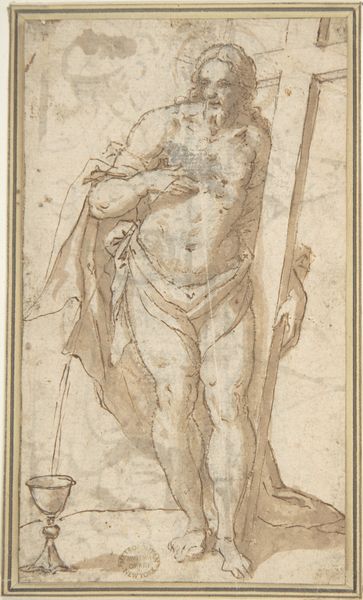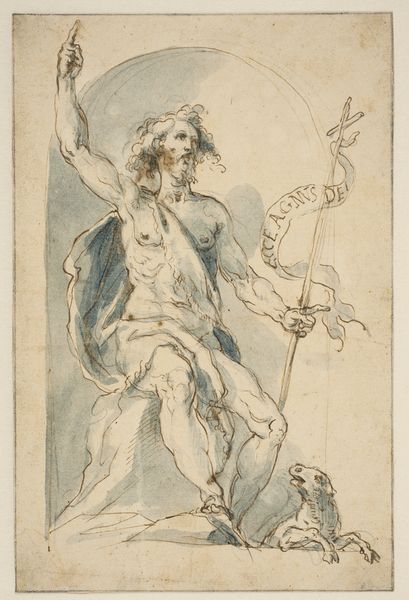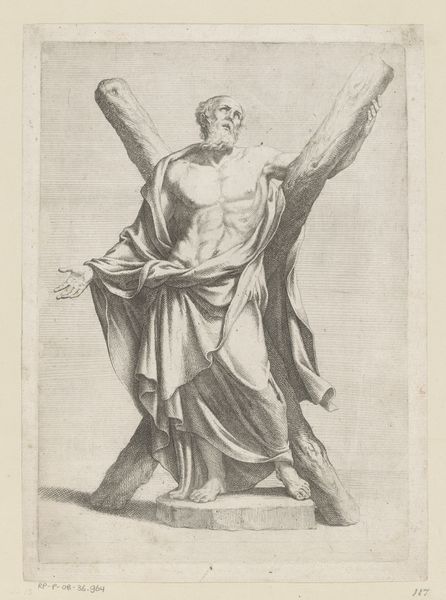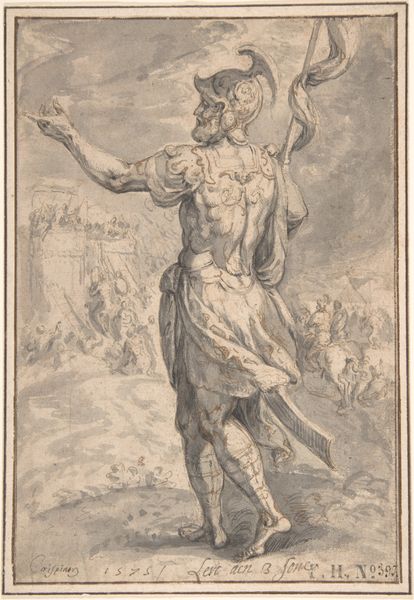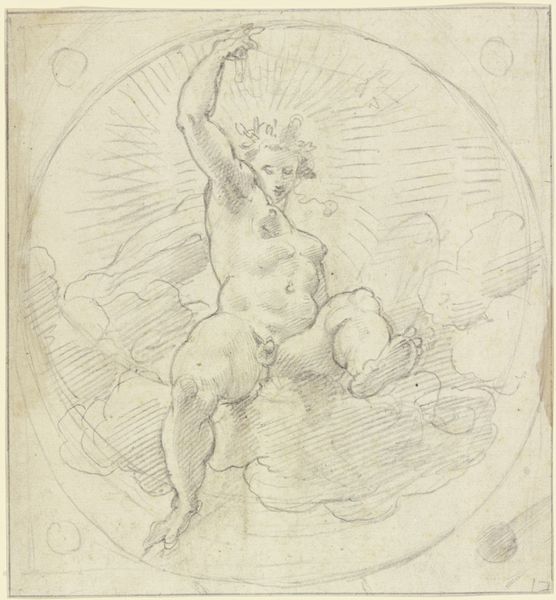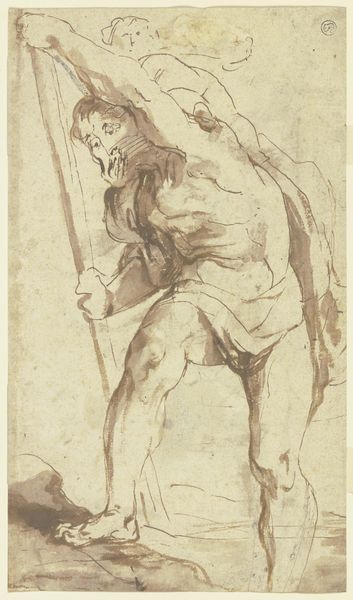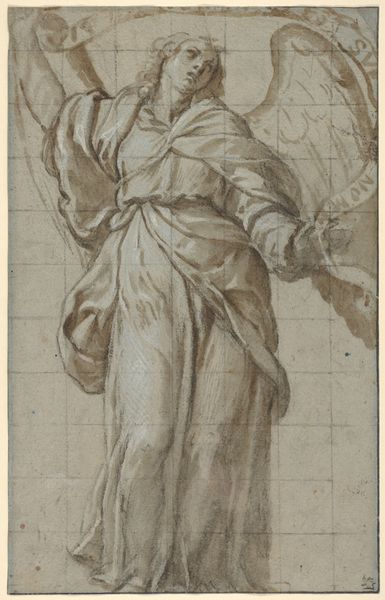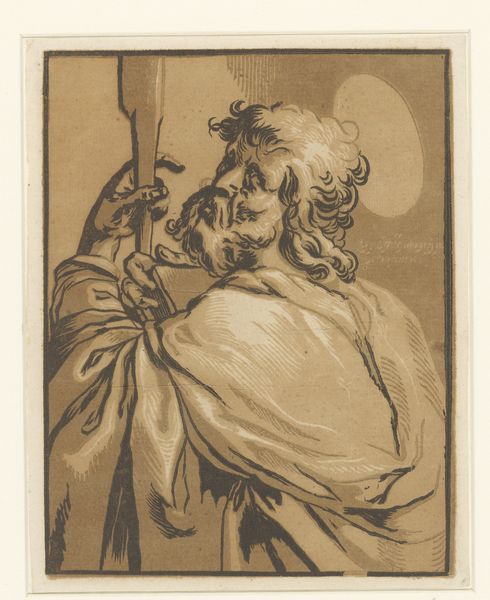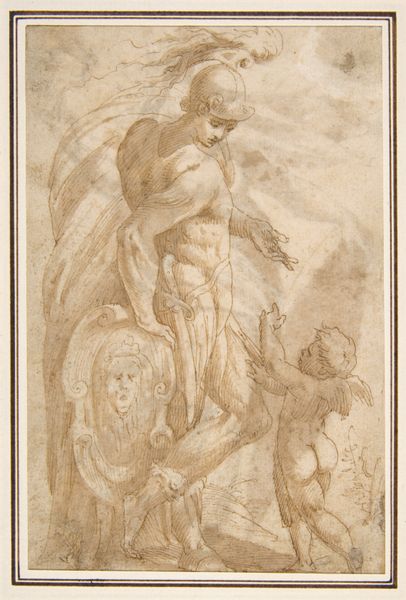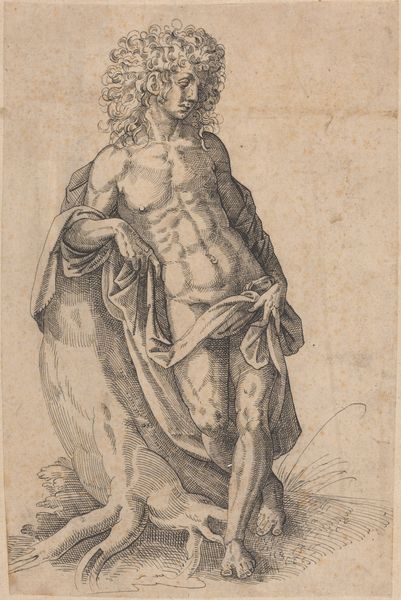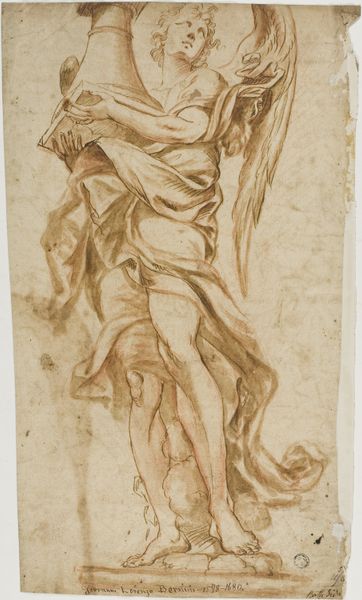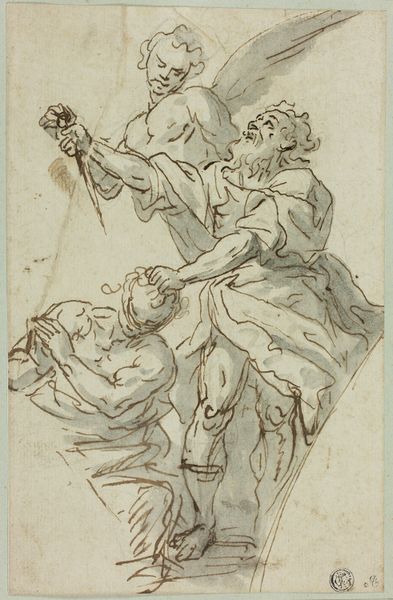
drawing, print, paper, ink, inorganic-material, chalk, charcoal
#
portrait
#
drawing
#
allegory
#
baroque
# print
#
pencil sketch
#
charcoal drawing
#
paper
#
charcoal art
#
ink
#
inorganic-material
#
chalk
#
charcoal
#
history-painting
Dimensions: 270 × 196 mm
Copyright: Public Domain
Curator: Here we have Alessandro Algardi's "Father Time," a drawing believed to have been created between 1620 and 1650, currently residing here at the Art Institute of Chicago. It's executed using ink, chalk, and charcoal on paper. Editor: The muted sepia tones immediately evoke a sense of antiquity, and the allegorical figure's pose is undeniably theatrical, embodying a distinct Baroque flair. There's a fluidity in the linework, creating dynamic movement despite the static subject. Curator: Indeed. Let’s consider the materials employed. The artist's conscious choice of charcoal and chalk – easily accessible and manipulable materials – suggests a deliberate accessibility to the viewer. Algardi subverts expectations, elevates the status of common materials to explore classical themes. Editor: But what about the artist's skill in rendering the chiaroscuro? Note how the shadows define the muscularity of the figure and accentuate the drapery's elegant folds. The semiotic language of the composition points to temporal inevitability. Father Time carrying the Ouroboros. Curator: A snake devouring its tail – ancient symbol of eternity, yes, But let's not overlook its function here. As a commodity in art making, that serpent is but a mark of the paper trade that time itself makes obsolete; like the old masters now yielding in the shadow of this 'history-painting' industrialization of fine drawing will also vanish eventually in time, yet still is collected, saved, profited off. It's a complex relationship. Editor: The power of this work hinges, as it always has, upon how well Algardi wielded his materials into the language and story this visual narrative puts forth and the themes they create through light, composition, movement, tone. The drawing’s narrative of temporality persists throughout the years. Curator: An important point. Perhaps it's that continuous negotiation of temporal themes, through material and mode of production, that truly accounts for Father Time's impact on art and culture alike. Editor: Well said, in the language of materials as metaphor itself. A dance of lines and forms across centuries.
Comments
No comments
Be the first to comment and join the conversation on the ultimate creative platform.
